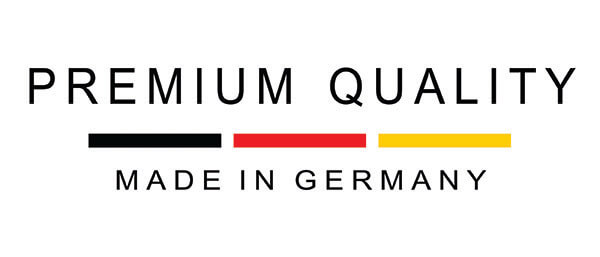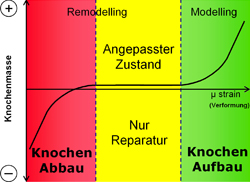the concept behind Peripheral Quantitative Computed Tomography - pQCT
Function of the bone
Bone geometry
Conventional area-projected bone density measurement methods cannot adequately describe bone strength, because this requires information about the bone geometry.

The functional muscle-bone unit
Muscle and bone form a functional unit. Muscle forces essentially regulate bone strength. In addition, muscle function is a crucial factor in preventing falls and fractures. Therefore, osteoporosis diagnosis is insufficient if it does not include the muscle. Improving muscle function not only leads to an increase in bone strength, but also prevents falls and thus reduces the risk of fractures.

Mechanical strength
The essential function of bone is to transmit mechanical forces and thus enable movement. The largest forces acting on the bone come from muscle contractions and are transmitted to the bone via the tendons. Because of the leverage, forces can act on the bones that exceed 10 times the body weight. In order to fulfil its mechanical tasks, the bone must be able to adapt to changes in the magnitude or direction of the force so that voluntary muscle contractions do not cause pain or even lead to fractures. In addition, the bone must also be able to react to changes in metabolism and the environment.
pQCT
The 3rd Dimension in Bone Density Assessment


XCT 2000L
Determination of
volumetric bone density,
Bone geometry and
Muscle parameters of arm or
Lower leg using pQCT.


XCT 3000
Determination of volumetric
Bone density, bone geometry
and muscle parameters of the arm or
Leg measureed by pQCT.

Do you have questions about our products or would you like to purchase a product?
Let our experts advise you. Simply arrange a non-binding consultation.
Mechanostat
Quantify Msucle
However, pQCT is a decisive step ahead of conventional methods: It additionally quantifies the muscular properties and thus determines the relationship between muscle and bone. This allows to quantify the relation between muscle and bone which is essential for the step from Osteoporosis diagnostics to diagnostics of Sarcopenia, Dynapenia and Frailty.

Bone geometry
Bone strength (not bone mass) is a regulated quantity. Since the 1960s, Harold Frost has described a control loop, called a mechanostat, which explains the adaptation of the bone to the deformations of the bone resulting from the mechanical forces (strain).

Control loops
The characteristic of every control loop is negative feedback. The muscle forces create a deformation in the bone. Osteocytes, by far the most abundant bone cells, are able to measure the deformation of the bone.

Optimisation throughout life
If the deformation of the bone exceeds a certain limit, the bone strength is increased by osteoblasts so that the deformation falls below this value again. On the other hand, if a second, lower limit is not regularly exceeded, bone is resorbed by osteoclasts so that the deformation is again in a range between the limits. This optimises bone geometry and thus bone strength with a minimum of material for a lifetime.
Let Stratec pQCT convince you!
Numerous scientific studies prove the validity of Stratec pQCT. Benefit from over 30 years of experience in muscle and bone research and over 1000 scientific publications on pQCT worldwide.